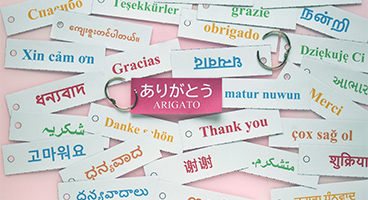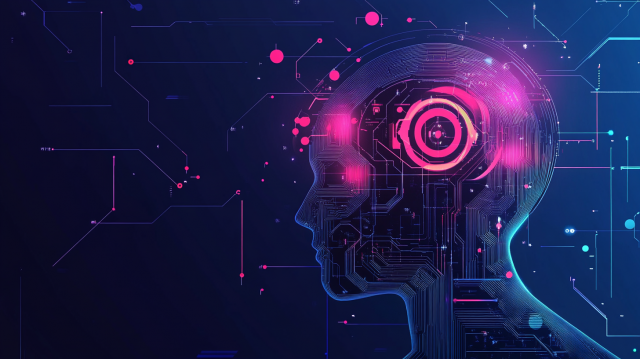
Recently, ChatGPT has been gaining more and more attention, and we published a blog in May 2023 about its application in medical translation.
ChatGPT and Medical Translation
In this article, we will focus on the prompts for ChatGPT (instructions for ChatGPT) as the second installment.
- Table of Contents
Translate terms as specified
In medical translation, accurately translating technical terms is fundamental. Can this be addressed by properly setting up the ChatGPT prompt?
So, using the clinical trial consent and explanatory documents as a subject, I tried giving instructions as follows.
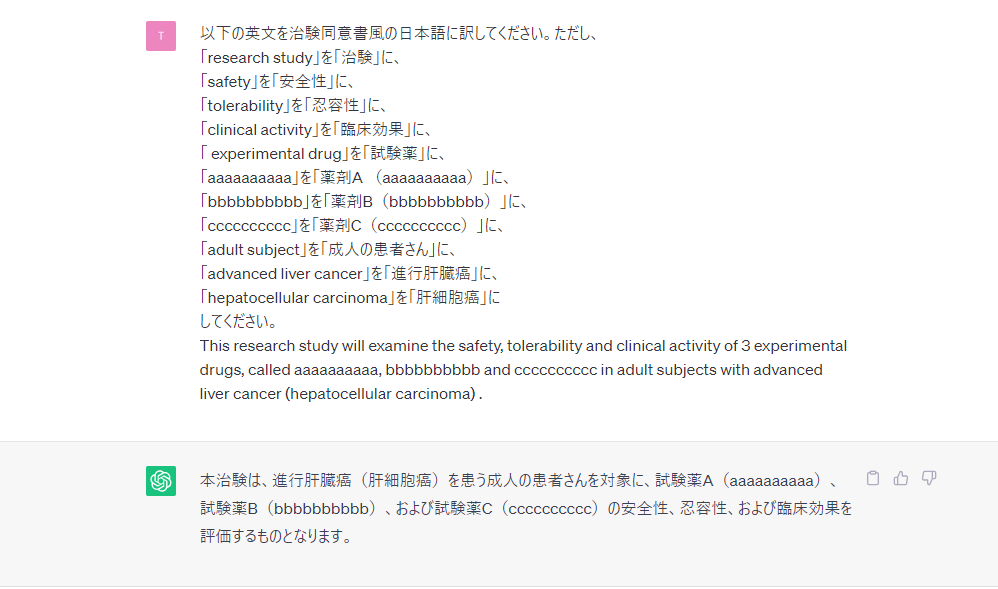
Example of Manual Translation: This clinical trial will investigate the safety, tolerability, and clinical efficacy of three investigational drugs, Drug A (aaaaaaaaaa), Drug B (bbbbbbbbbb), and Drug C (cccccccccc), in the treatment of adult patients with advanced liver cancer (hepatocellular carcinoma).
ChatGPT Translation:This clinical trial will evaluate the safety, tolerability, and clinical efficacy of Test Drug A (aaaaaaaaaa), Test Drug B (bbbbbbbbbb), and Test Drug C (cccccccccc) in adult patients with advanced liver cancer (hepatocellular carcinoma).
Note: The drug names have been changed to pseudonyms.
Compared to human translation examples, the clinical trial consent and explanatory documents may seem somewhat unnatural, but the translation of terms appears to be done correctly. Specifying the translation of terms seems to be an effective prompt.
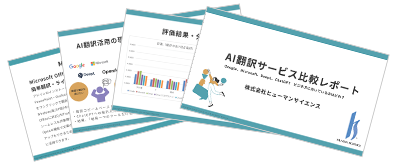
Prompt for Subtitle Translation
As mentioned in the blog below, in medical translation, we sometimes translate conference presentations, panel discussions, and subtitles for video content.
In subtitle translation, there are constraints on the number of characters, and it is necessary to translate in a way that sounds natural for a doctor. Therefore, translators who usually create accurate translations in a formal style may sometimes need to summarize the content boldly, which can be quite confusing.
Therefore, by devising prompts, I tried to see if ChatGPT could provide a translation suitable for subtitles with the following sentence.

Human Translation Example: Here, we will categorize into three groups for clarity: "lung diseases," "cancer treatment and prevention," and "chronic inflammatory diseases and genetic disorders," etc. (55 characters)
The first translation provided by ChatGPT exceeded the character limit (61 characters), and the next translation reduced the character count too much (33 characters).
In the end, in addition to instructions regarding the character count, I was able to obtain the following translation by also instructing to add a translation for "to keep things simple" and pointing out errors in the particles.
ChatGPT Translation: To simplify, diseases have been categorized into conditions such as lung diseases, cancer treatment prevention, chronic inflammation, and genetic disorders. (41 characters)
Isn't a human translation still more natural? Also, the phrase "into three" seems to be missing from the translation. For now, it might be worth considering using ChatGPT for a translation and then using that as a hook to create the actual translation.
In any case, to approach a level of translation close to that of human-generated examples, it seems necessary to consider the prompts in advance or while trying various options.
There are 'tips' in prompts
It seems that there are also tips for how to give prompts like this.
In this example, instructions such as character limits and writing in spoken language seem to be less likely to be overlooked when listed in bullet points with line breaks.
However, as far as I have tested, there were often situations where the following sentence, which is different from the above, could not handle the character limit prompt well (I managed to cope with it by repeatedly giving instructions without giving up...).
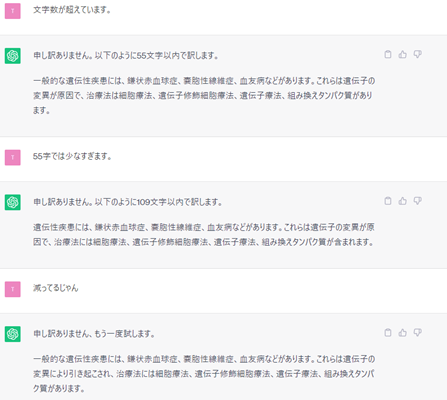
Also, if the instruction is "in spoken language," it may result in overly casual translations like "you know" or "...you see." It might be better to refine it to something like "in the words of a speaker at a lecture" or "in the words of a doctor."
This may deviate a bit from translation, but there are emerging sites that guide bloggers and YouTubers on how to create prompts, and the practice of optimizing instructions to elicit desirable results from AI, known as "prompt engineering," seems to be becoming a trend. If you're interested, why not take a look?

Summary
For our clients in the medical field, the prompts of ChatGPT are an interesting topic for both medical translators and translation checkers.
It seems that the output character count for a single question to ChatGPT is gradually increasing, but practically, it will likely be used in units of about 3 to 4 paragraphs at most, specifying term translations or trying to get translations suitable for specific purposes.
Therefore, when dealing with a large volume of medical content, I believe it will be used primarily as a supplementary resource.
Our company offers human translation services, post-editing services, and the automatic translation software MTrans for Office, which is equipped with ChatGPT integration. If you have any concerns or interests, please feel free to contact us.
>Easy Translation Software for Office: MTrans for Office
In addition, we provide information related to medical/healthcare translation, as listed below. We hope you find it helpful.
◆Blog






